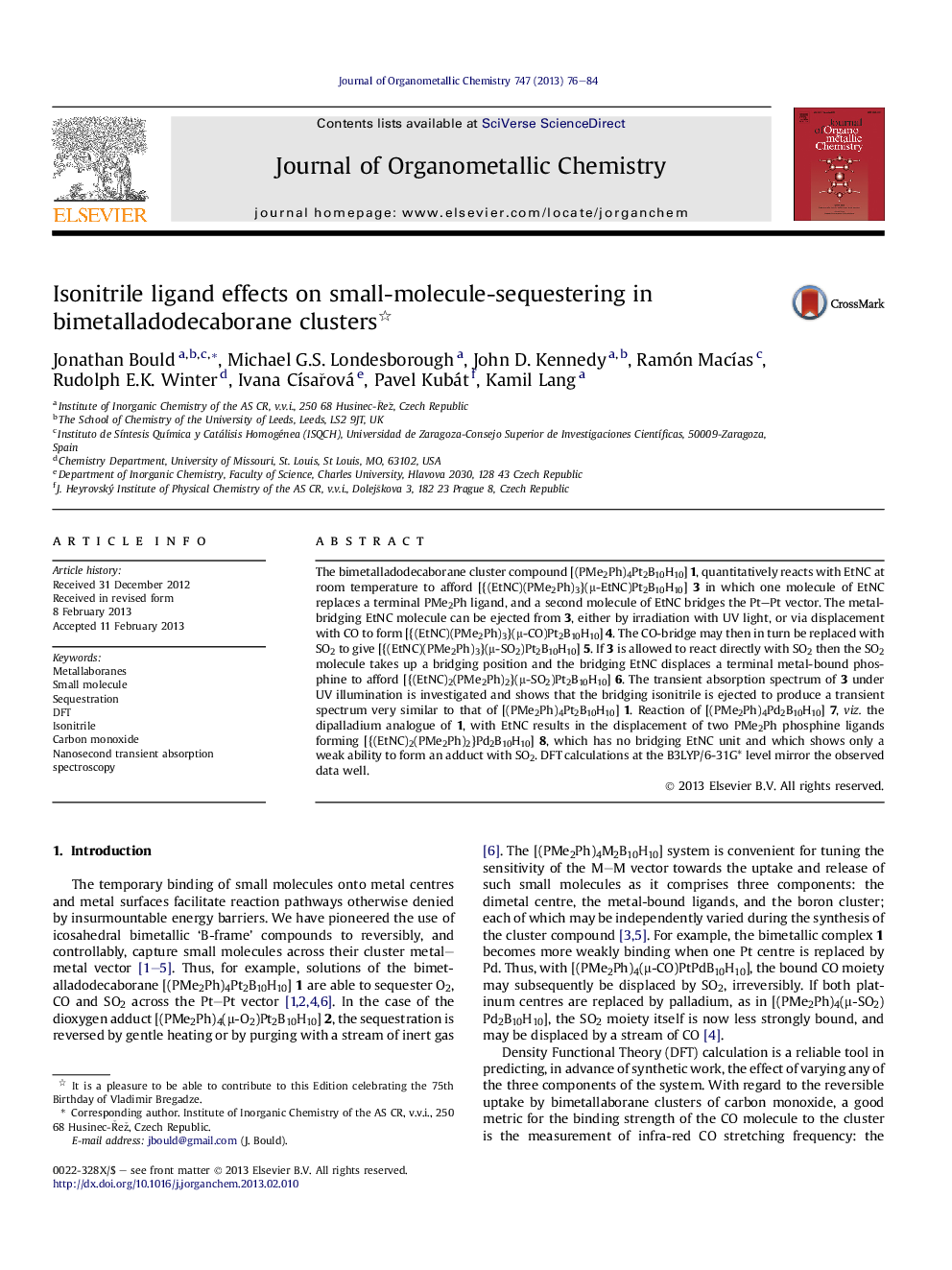| Article ID | Journal | Published Year | Pages | File Type |
|---|---|---|---|---|
| 1323672 | Journal of Organometallic Chemistry | 2013 | 9 Pages |
The bimetalladodecaborane cluster compound [(PMe2Ph)4Pt2B10H10] 1, quantitatively reacts with EtNC at room temperature to afford [{(EtNC)(PMe2Ph)3}(μ-EtNC)Pt2B10H10] 3 in which one molecule of EtNC replaces a terminal PMe2Ph ligand, and a second molecule of EtNC bridges the Pt–Pt vector. The metal-bridging EtNC molecule can be ejected from 3, either by irradiation with UV light, or via displacement with CO to form [{(EtNC)(PMe2Ph)3}(μ-CO)Pt2B10H10] 4. The CO-bridge may then in turn be replaced with SO2 to give [{(EtNC)(PMe2Ph)3}(μ-SO2)Pt2B10H10] 5. If 3 is allowed to react directly with SO2 then the SO2 molecule takes up a bridging position and the bridging EtNC displaces a terminal metal-bound phosphine to afford [{(EtNC)2(PMe2Ph)2}(μ-SO2)Pt2B10H10] 6. The transient absorption spectrum of 3 under UV illumination is investigated and shows that the bridging isonitrile is ejected to produce a transient spectrum very similar to that of [(PMe2Ph)4Pt2B10H10] 1. Reaction of [(PMe2Ph)4Pd2B10H10] 7, viz. the dipalladium analogue of 1, with EtNC results in the displacement of two PMe2Ph phosphine ligands forming [{(EtNC)2(PMe2Ph)2}Pd2B10H10] 8, which has no bridging EtNC unit and which shows only a weak ability to form an adduct with SO2. DFT calculations at the B3LYP/6-31G* level mirror the observed data well.
Graphical abstractReaction of [(PMe2Ph)4Pt2B10H10] with EtNC produces [(EtNC)2(PMe2Ph)3Pt2B10H10] which contains terminal and bridging isonitrile groups. The bridging EtNC may be ejected by UV irradiation or replaced by CO and then by SO2. DFT calculation models the products well.Figure optionsDownload full-size imageDownload as PowerPoint slideHighlights► Synthesis and characterization of isonitrile-substituted bimetalladodecaboranes. ► Good correspondence between measured and DFT-calculated CO stretching frequency. ► UV irradiation expels the bridging isonitrile from the adduct. ► Photorelease monitored by transient absorption spectroscopy experimentation.
